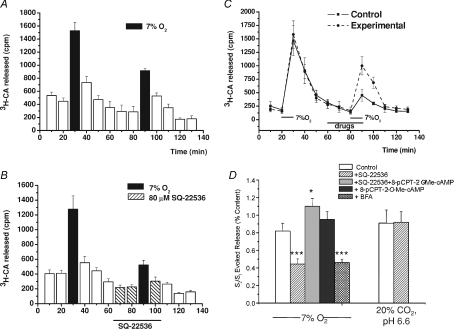Figure 3. Effect of the adenylate cyclase inhibitor SQ-22536, the Epac activator 8-pCPT-2′-O-Me-cAMP and the Epac inhibitor brefeldin A on the release of [3H]CA induced by low and acidic/hypercapnic stimuli.
and acidic/hypercapnic stimuli.
A and B, the mean time course of release obtained in 6 control CBs challenged twice with a hypoxic stimulus (7% O2-equilibrated solutions; black bars) as drawn, and in 6 experimental CBs similarly stimulated except that 20 min prior to and during the second hypoxic challenge and first post-stimulus, 80 μm SQ-22536 was present in the incubating solution. C, the mean time course of release obtained in 6 control CBs challenged twice with a hypoxic stimulus (7% O2-equilibrated solutions) as drawn. Incubation solutions in control CBs contained 80 μm SQ-22536 during the period marked for drugs, and experimental CB incubation solution contained 80 μm SQ-22536 + 0.1 mm 8-pCPT-2′-O-Me-cAMP during the same period. D, bars represent the release evoked by hypoxia (calculated as in Fig. 2) in control (open bars) and experimental CB as labelled in the drawing (filled bars) calculated from CB in A–C. The figure also shows mean data obtained in eight individual experiments using the Epac inhibitor brefeldin A (100 μm) using protocols comparable to those in B. D also presents mean data obtained for hypercapnic acidosis with protocols identical to those described in A and B. Values are means ±s.e.m. for 6–10 CBs (*P < 0.05; ***P < 0.001).

